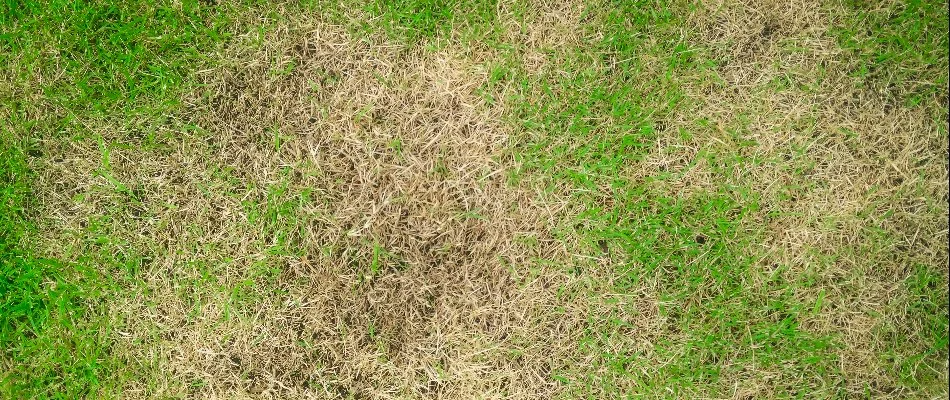Your grass in Iowa needs fertilizer treatments throughout the year to remain strong and healthy. However, too much of it can cause more harm than good. Excessive fertilizer can cause fertilizer burn, where the salt contents from the treatment will pull out too much moisture and cause the roots of your grass to dry and wilt. The extra product can also end up in nearby bodies of water, polluting them with nutrients that encourage harmful algae growth. What's more, it is a waste of money because you're applying too much product that your lawn cannot use. To prevent these problems from happening, it's best to hire a lawn care company and let professionals fertilize your turf!
Too much fertilizer on your lawn causes fertilizer burn.

Fertilizer is food for your grass and stimulates healthy growth, but too much of it can result in the exact opposite. When you apply too much fertilizer on your lawn, fertilizer burn can happen. Fertilizer burn is the result of the soluble salt contents from the treatment drawing out too much moisture from your lawn, which dries out the roots and causes the grass blades to develop a burned or scorched appearance. The excess salts can also disrupt the soil condition and create a toxic environment that is not suitable for healthy growth.
Some common indications of fertilizer burn on your lawn include yellow or brown grass curling over and stunted growth.
Excessive Lawn Fertilizer Applications Can Result in Nutrient Pollution
The dangers of using too much fertilizer on your lawn extend to the environment. When your lawn receives excess fertilizer, the extra nutrients that it cannot absorb will run off and leach into the ground, eventually reaching nearby bodies of water. This situation is called nutrient pollution and causes significant disruption to aquatic ecosystems. These nutrients will lead to excessive growth of algae, preventing sunlight from reaching aquatic plants, inhibiting their growth, and eventually causing their death. As these plants die and decay, they will use up and deplete the level of oxygen in the water, harming fish and other aquatic animals.
Applying too much fertilizer to your lawn is a waste of money.
If you apply too much fertilizer on your lawn, it will only consume the nutrients that it needs to grow. Past that point, any excess nutrients will simply run off and remain unutilized. This is a waste of your hard-earned money because you're administering too much fertilizer that your grass can't use. It can only do more harm than good, and you might even end up spending more money fixing the effects of overfertilization.
Hire a Lawn Care Company to Ensure the Right Amount of Fertilizer is Used
It's easy to use too much fertilizer on your lawn if you do it yourself. To avoid this from happening, the best course of action is to hire a lawn care company to fertilize your grass. A team of lawn care professionals can determine what and how much nutrients it needs to ensure it has enough to grow strong and healthy. Lawn fertilization is also not a one-and-done thing, and professionals know that. You can expect them to apply fertilizer treatments multiple times a year and at the right times to keep your lawn nourished with nutrients that will maintain its vigor and robust growth.
Call us today to sign up for our lawn fertilization service!
Take the guesswork out of fertilizing your lawn yourself by letting our experienced team at A+ Lawn & Landscape handle it! We offer a reliable lawn fertilization service to commercial and residential properties, as well as HOAs, in Des Moines, West Des Moines, Ankeny, IA, and neighboring communities. Our fertilization program runs from early spring to late fall, so you can rest assured that your grass is in tip-top shape throughout the growing season. Call us today at (515) 289-2020 to sign up for our lawn fertilization service.





Comments (0)
Thanks for your comment!
Thanks for your feedback! Your comments have been successfully submitted! Please note, all comments require admin approval prior to display.
Error submitting comment!
There is a problem with your comment, please see below and try again.